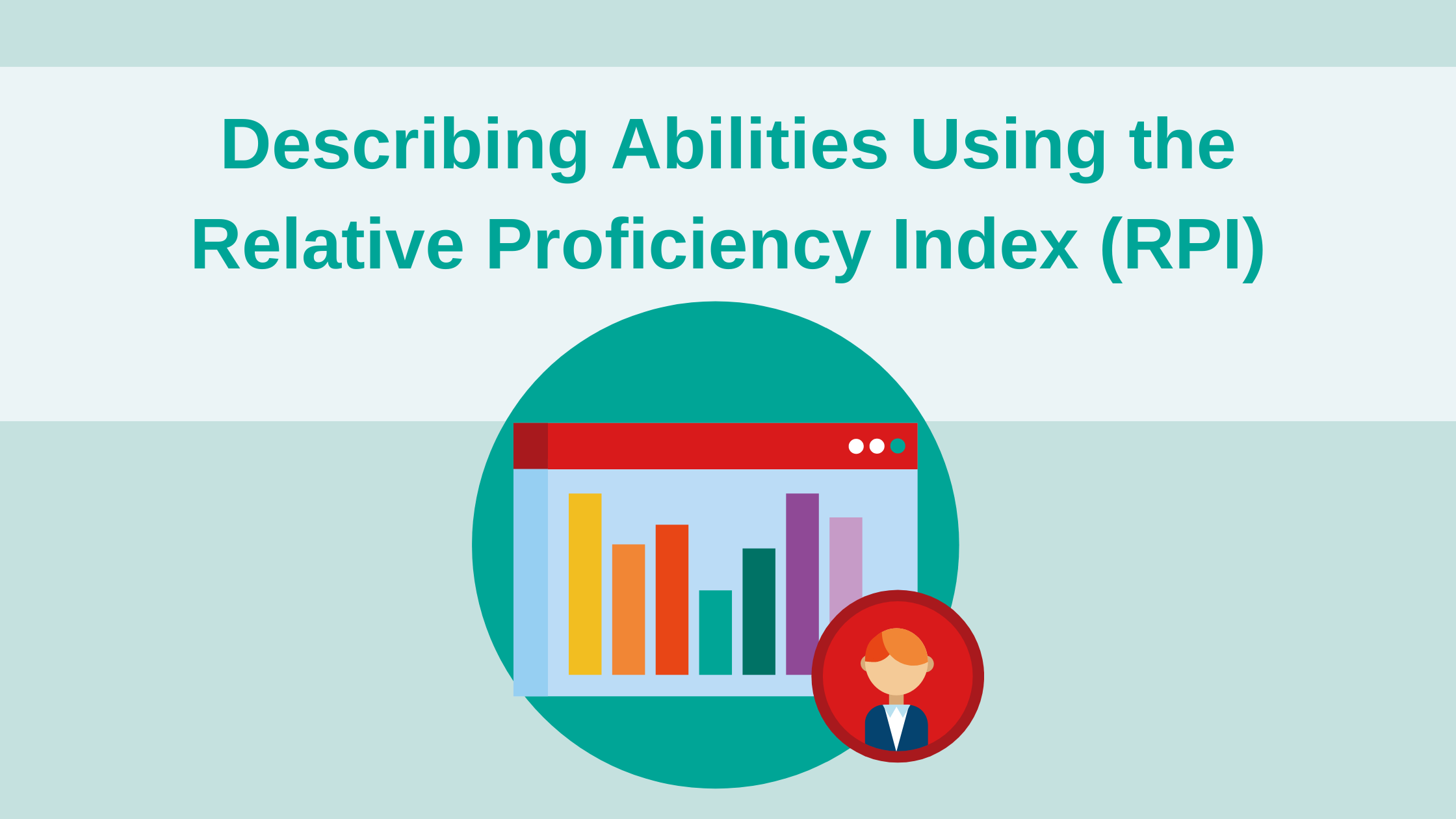Describing Abilities Using the Relative Proficiency Index (RPI)

Describing Abilities Using the Relative Proficiency Index (RPI)
Evaluators administer norm-referenced tests to compare "normal" skill levels to those of individuals of the same age. Comparing students to one another allows us to identify strengths and weaknesses. Historically, evaluators have interpreted performance using the standard score. While standard scores indicate relative standing in the normative group; specifically, a score’s position on the normal curve, it does not indicate proficiency on a skill. The Woodcock Johnson suite of tests is based on the Rasch Measurement Model which allows for the use of the RPI, information necessary for planning instruction/intervention.
What is the Relative Proficiency Index (RPI)?
The relative proficiency index (RPI) score is a criterion-referenced index of an examinee’s proficiency on a given skill. In short, an RPI allows the user to make inferences about how well, or poorly, an examinee will perform on specific tasks on which their peers will demonstrate proficiency. The RPI can be used to convey this information to stakeholders and assist in designing interventions.
How Can the RPI be Used
-
- Predict the percentage of success on similar tasks
- Describe the instructional implications (e.g., how easy or difficult the examinee will find specific information)
- Help describe the examinee’s strengths and weaknesses
- Drive intervention planning
How is the RPI Interpreted?
An RPI predicts an examinee’s percentage of success for a person when given a variety of tasks that individuals of the same age or same grade would perform with 90% success.
RPI scores are presented as fractions. The numerator can range from 0 – 100 and is interpreted to mean at what percentage of success the examinee would perform. The denominator is always 90, which represents 90% efficiency on the task. In a hypothetical situation, imagine that a child has an RPI of 50/90 on the reading comprehension test. This means that, on similar reading comprehension tasks, the examinee tested would demonstrate 50% proficiency, whereas their same age or grade level peer would demonstrate 90% proficiency. An RPI score can be interpreted using the table below. As indicated, a score of 1/90 and 24/90 indicates that the examinee has impaired skills in the area being tested. By comparison, a score of 95/90 to 100/90 indicates that the examinee performs better than their peers on the task.

How Do I Describe an RPI in my Reports?
While the precise phrasings will vary depending on the achievement area or cognitive ability being addressed and the level of the RPI, a sample statement added to an examinee report might state:
Samantha’s RPI of 21/90 on the Phoneme/Grapheme Knowledge cluster indicates that on similar tasks, in which the average fourth-grade student would demonstrate 90% proficiency, Samantha would demonstrate 21% proficiency. Samantha’s knowledge of phoneme-grapheme correspondence and spelling patterns is very limited. She is likely to find grade level reading and spelling tasks extremely difficult.
How Do I Leverage RPI Scores?
Authors of major test batteries provide guidance for interpreting results in the examiner’s manual. Please carefully read the instructions and familiarize yourself with the appropriate manner of interpreting the results obtained. To this end, we recommend an RPI score be analyzed through these lenses:
-
- Other RPI scores, on similar skills
- Standard Scores
- Confidence Intervals
- Percentile Ranks
- Normative (Inter) Performance
- Intra-Individual Performance
- Base Rates
At the same time, the data (e.g., RPI scores) collected through formal evaluations should be merged and considered in relation to the multiple sources of data collected prior to, and as a part of, the overall evaluation process (Schrank, Stephens, & Schultz, 2017). This is the legally defensible way in which eligibility can be determined. To this end:
-
- Consider student’s performance on tests in relation to age-based/grade-based norms
- Consider publisher guidance
- Consider RPI scores
- Consider RPI scores in relation to other multiple sources of data
Ultimately, RPI scores provide valuable insight into an examinee’s performance, providing more useful information for instructional programming beyond the information provided by a standard score. The RPI is a unique lens only provided by the battery of tests that make up the Woodcock-Johnson family.
Interpret and understand the WJ IV scores with this reference chart.
To learn more about the RPI, watch this webinar below!
References
Jaffe, L. E. (2009). Development, interpretation, and application of the W score and the relative proficiency index (Woodcock-Johnson III Assessment Service Bulletin No. 11). Rolling Meadows, IL: Riverside Publishing. http://www.riverpub.com/products/wjIIIComplete/pdf/WJ3_ASB_11.pdf.
Mather, N. and Jaffee, L.E. (2016) Woodcock-Johnson IV: Reports, Recommendations, and Strategies. NJ: John Wiley & Sons.
Schrank, F.A., Stephens-Pisecco, T.L., & Schultz, E.K. (2017). The WJ IV core-selective evaluation process applied to identification of a specific learning disability (Woodcock-Johnson IV Assessment Services Bulletin No. 8). Itasca, IL. Houghton Mifflin Harcourt.
Snader, E., LaForte, E., Duffy, K. (2019, February). Describing Students’ Abilities Using the WJ IV Relative Proficiency Index. Mini Skills session presented at the annual National Association of School Psychologists (NASP) convention, Atlanta, GA.


.png?width=900&name=WJ%20V%20Clusters%20That%20Provide%20CALP%20Scores%20(2).png)
.png?width=900&name=NEW%20Test%20Spotlight%20(2).png)
-1.png)